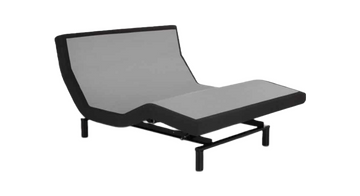About Sciatica
If you’ve ever felt that tug of pain from the very inside of your hip, down the back of your legs and into your knees, you’ve likely experienced sciatic nerve pain. This is one of those pains that doesn’t seem to be able to be reached, and while there are positions that you can get yourself into to stretch the muscle and alleviate some of the pain, it’s not always possible for those of limited mobility. It’s important to understand how you can relieve the symptoms of sciatic pain, though, because otherwise you could find yourself in excruciating pain and not know how to deal with it.
Sciatica refers to pain that radiates along the path of the sciatic nerve, which branches from your lower back through your hips and buttocks and down each leg. Typically, sciatica affects only one side of your body. sciatica most commonly occurs when a herniated disk, bone spur on the spine or narrowing of the spine compresses part of the nerve. This causes inflammation, pain and often some numbness in the affected leg.
Although the pain associated with sciatica can be severe, most cases resolve with non-operative treatments in a few weeks. People who have severe sciatica that’s associated with significant leg weakness or bowel or bladder changes might be candidates for surgery.
How is Sciatica treated?
Some common treatments for sciatica include:
1. Medication
3. Surgery
5. Alternative medicine (such as acupuncture)
However, there are also several lifestyle changes that can help you find relief from your symptoms. If you often experience sciatica symptoms at night, you may benefit from a new mattress and/or adjustable bed.
What prevent's good sleep with Sciatica?
During sleep, you are not moving around as much as you would be while awake, which puts your body in a position of relaxing little too much. This lack of movement and motion allows for the body to remain in one position for too long, putting added stress on any component of your neck, hips and back, which can potentially worsen sciatica.
You spend around a third of the day in bed, so it is critically important to have proper spinal alignment while you sleep, just as you would try to have good posture throughout the day while sitting or standing. Good spinal alignment is essential to preventing the symptoms of sciatica while sleeping, so that a person can reap the full benefits of a good night’s sleep.
Millions of people experience back, hip, and neck pain due to conditions such as:
1. Arthritis
3. Fibromyalgia
5. Hip Bursitis
6. Sciatica
How to get a good night's sleep with Sciatica
Someone suffering from sciatica often experiences pain that radiates from your lower spine to your buttock and down the back of your leg, which can affect daily activities, including the ability to get a good night’s sleep.
Envisioning a good night’s sleep with sciatica includes the alleviation of pressure on the nerves in the back, neck and spine. Finding the best mattress for sciatica shouldn’t be too difficult, but it’s important that you do your research on a good quality mattress. An adjustable base is a fundamental investment to help sooth these conditions, too.
Some medical professionals also recommend sleeping in a reclining chair or using a wedge pillow as a solution to keep the body elevated. The thing is, reclining chairs don’t typically allow the same level of customization as an adjustable bed. As for wedge pillows, they limit sleeping positions, such as sleeping on the side and/or stomach. Therefore, only allowing back sleeping, which increases the incidences of snoring and snoring tends to promote acid reflux.
So, in most cases, an adjustable bed is your best choice.












